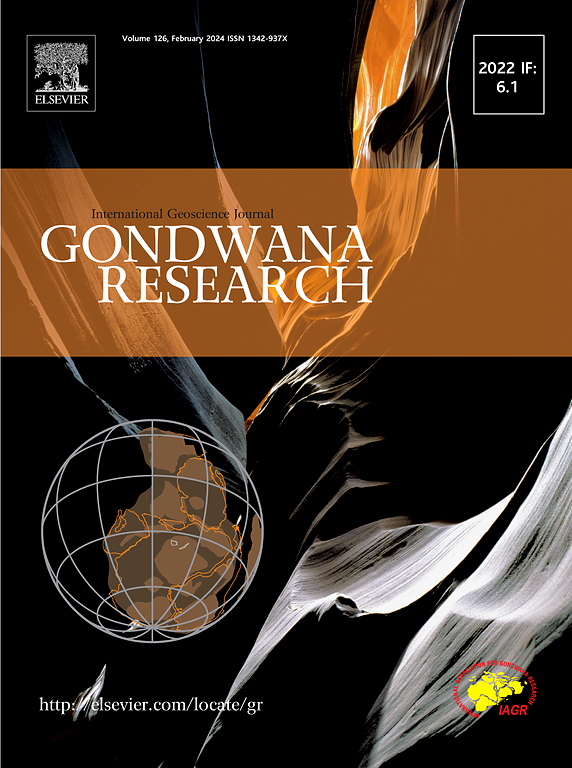Topographic stress proxy as a new causative factor in landslide susceptibility mapping
IF 7.2
1区 地球科学
Q1 GEOSCIENCES, MULTIDISCIPLINARY
引用次数: 0
Abstract
On the Tibetan Plateau, the frequency of bedrock landslides has significantly increased due to high altitude, high seismic intensity, and high topographic stress, posing severe threats to human safety and infrastructure. Landslide susceptibility assessment (LSA) is an effective tool for preventing and managing landslide hazards. Although the extent of slope failure depends on landscape-scale patterns of bedrock fracturing induced by topographic stress, current LSA models rarely incorporate this factor and fail to adequately link the causative factors considered with the mechanisms of landslide formation. This study introduces a new factor—topographic stress—into existing LSA models to capture the mechanisms underlying landslide formation better. Several popular machine learning models (LGR, MLP, SVM, and RF) were employed to investigate the impact of topographic stress proxies on landslide susceptibility assessments. Results reveal that stress proxies outperform conventional factors across models, with FP recalibrating susceptibility distributions by reducing High/Very High-risk zones by 3.1 ∼ 9.1 % and expanding Low/Very Low areas by 5.3 ∼ 14.9 % in both coseismic and pre-seismic scenarios. Model performance metrics significantly improved: overall accuracy increased by 3 ∼ 6 %, recall by 0.5 ∼ 1.6 %, and AUC values by 2 ∼ 4 %, with RF_FP and SVM_FP achieving peak discriminative power (AUC: 0.898 and 0.858). The topographic stress proxy FP bridges geomechanical processes (stress-fracture-weathering interactions) and data-driven modeling, identifying fracture zones that precondition slopes for failure—particularly near active faults where stress accumulation elevates landslide risk by amplifying fracture density and strain localization. This framework enables proactive hazard mitigation in tectonically active orogens by prioritizing physics-informed stress preconditioning over trigger-centric approaches. Future applications should leverage stress proxies to decode landscape-scale fracture evolution and cascading slope destabilization mechanisms, advancing toward predictive, process-based landslide susceptibility mapping.

地形应力替代物是绘制滑坡易发性地图的新致灾因素
青藏高原由于海拔高、地震烈度高、地形应力大,基岩滑坡发生频率明显增加,对人类安全和基础设施构成严重威胁。滑坡易感性评价(LSA)是预防和管理滑坡灾害的有效工具。虽然边坡破坏的程度取决于地形应力引起的基岩破裂的景观尺度模式,但目前的LSA模型很少考虑这一因素,也未能将所考虑的诱发因素与滑坡形成机制充分联系起来。为了更好地捕捉滑坡形成的机制,本研究在现有的LSA模型中引入了地形应力这一新的因子。使用几种流行的机器学习模型(LGR, MLP, SVM和RF)来研究地形应力代理对滑坡易感性评估的影响。结果表明,应力代理在所有模型中都优于传统因素,在同震和震前情景中,FP重新校准了敏感性分布,将高/极高风险区域减少了3.1 ~ 9.1%,将低/极低区域扩大了5.3 ~ 14.9%。模型性能指标显著改善:总体准确率提高了3 ~ 6%,召回率提高了0.5 ~ 1.6%,AUC值提高了2 ~ 4%,RF_FP和SVM_FP达到了峰值判别能力(AUC: 0.898和0.858)。地形应力代理FP连接了地质力学过程(应力-断裂-风化相互作用)和数据驱动的建模,识别了断裂带,这些断裂带是边坡破坏的先决条件,特别是在活动断层附近,应力积累通过放大断裂密度和应变局部化而增加了滑坡风险。该框架通过优先考虑物理信息的应力预处理,而不是以触发器为中心的方法,可以在构造活跃的造山带中主动减轻灾害。未来的应用应该利用应力代理来解码景观尺度的断裂演化和级联边坡失稳机制,朝着预测的、基于过程的滑坡易感性制图的方向发展。
本文章由计算机程序翻译,如有差异,请以英文原文为准。
求助全文
约1分钟内获得全文
求助全文
来源期刊

Gondwana Research
地学-地球科学综合
CiteScore
12.90
自引率
6.60%
发文量
298
审稿时长
65 days
期刊介绍:
Gondwana Research (GR) is an International Journal aimed to promote high quality research publications on all topics related to solid Earth, particularly with reference to the origin and evolution of continents, continental assemblies and their resources. GR is an "all earth science" journal with no restrictions on geological time, terrane or theme and covers a wide spectrum of topics in geosciences such as geology, geomorphology, palaeontology, structure, petrology, geochemistry, stable isotopes, geochronology, economic geology, exploration geology, engineering geology, geophysics, and environmental geology among other themes, and provides an appropriate forum to integrate studies from different disciplines and different terrains. In addition to regular articles and thematic issues, the journal invites high profile state-of-the-art reviews on thrust area topics for its column, ''GR FOCUS''. Focus articles include short biographies and photographs of the authors. Short articles (within ten printed pages) for rapid publication reporting important discoveries or innovative models of global interest will be considered under the category ''GR LETTERS''.
 求助内容:
求助内容: 应助结果提醒方式:
应助结果提醒方式:


